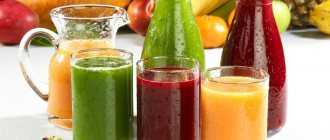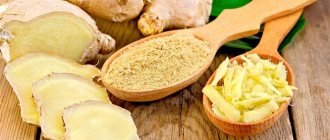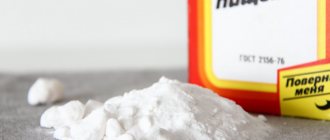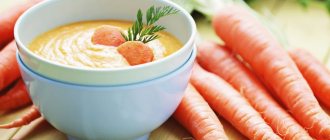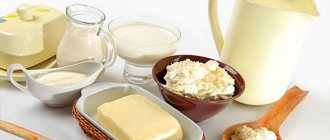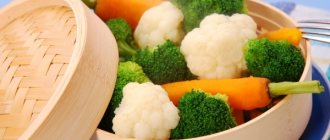As a component of medicinal preparations, chicory acts as a strong choleretic and gallstone-dissolving component for pancreatitis and cholecystitis. But the benefits of a medicinal plant depend both on the method of its use and on the appropriateness of using decoctions for various conditions of a sick person.
As a component of medicinal preparations, chicory acts as a strong choleretic agent for pancreatitis and cholecystitis.
Healing properties for cholecystitis, gastritis, inflammation of the pancreas
Chicory has a positive effect due to its chemical composition:
- compounds of potassium and oxycoumarins;
- chicory and hydroxycinnamic acids;
- a number of flavonoids (apigenin, quercetin, etc.).
All of these substances increase tone, strengthen resistance to viruses, motivate the circulatory system and improve gastric peristalsis.
The rhizomes of the grass contain an incredible amount of insulin and glycoside. That is why chicory is so healing for pancreatitis and cholecystitis. After all, malfunctions in pancreatic fermentation lead to insulin deficiency and, as a consequence, to diabetes.
In addition, chicory increases secretory activity and bile secretion. Decoctions from the medicinal plant stimulate the digestive glands and normalize pancreatic fermentation.
Chicory is used in a variety of ways:
- In the treatment of skin. Compresses from a decoction of roots treat ulcers, rashes, and acne. Or make homemade masks from the juice of fresh roots with honey. The same property of the decoction helps treat gastritis and stomach ulcers.
- To reduce spleen tumors. Chicory infusion can relieve inflammation and relieve pain.
- To remove small stones from the gallbladder and normalize the flow of bile.
- As an additional treatment for anemia. Organic iron is found in abundance in the sap of young shoots of wild plants.
- As a sedative home remedy. Teas from flowers have long been used in folk medicine to treat hysteria and nervous breakdowns.
- To prevent liver diseases, drink a herbal mixture (calendula, St. John's wort, knotweed), adding crushed root to it.
The combination of beneficial properties of chicory makes it popular in the folk treatment of gastrointestinal problems, as well as diseases such as cholecystitis and pancreatitis.
Can I drink it or not during an exacerbation of pancreatic inflammation?
Chicory, for all its undoubted healing properties, can become dangerous during periods of exacerbation of inflammation of the pancreas. Like almost all foods or drinks introduced into the menu at the wrong time.
Chicory is a natural catalyst for the outflow of bile and secretory activity. But even these seemingly beneficial properties are harmful in acute inflammation of the pancreas. When pancreatitis or cholecystitis worsens, the pancreas needs complete rest. The first few days are prescribed fasting.
The remedy is allowed no earlier than two weeks after the attack if you are dealing with chronic pancreatitis or cholecystitis. Or in a month, if we are talking about the acute stage of the disease.
Contraindications
If a patient who suffers from pancreatitis has hemorrhoids, this product is strictly prohibited for use. Another contraindication is varicose veins and asthma.
In addition, it is also not recommended to consume chicory for people who have sand or gallstones. During the period of bile leaching, stones clog the ducts. This leads to severe pain.
When the disease is in the chronic phase
The best time to start pampering yourself with “chicory coffee” is in the remission stage. You can make decoctions from crushed rhizomes, steam flowers and fresh shoots, and use traditional medicine recipes to cure chronic inflammation of the pancreas.
If a nutritionist or treating gastroenterologist has allowed you to introduce coffee into your diet, then you can safely use its analogue - instant chicory (1 tsp per 200 ml of water). The drink itself has a slightly sweet taste, so it does not need sugar. It is useful to add a little milk.
Chicory can have a lot of advantages for the pancreas, since its effect on the body is multifaceted:
- chicory is a natural probiotic, it improves peristalsis and gastric microflora, cures constipation;
- the high insulin content in the roots prevents the onset of diabetes;
- the natural secretory quality of the plant normalizes the metabolic process and controls healthy body weight;
- a number of beneficial minerals and vitamins in the plant increase the body’s tone and its ability to fight infectious diseases.
Decoctions are excellent for fighting cholesterol, remove harmful substances from the body, and activate the flow of bile.
Chicory is also known as a mild sedative without side effects such as drowsiness or confusion. After drinking the drink, your mood improves and your performance increases. This is explained by the plant’s ability to have a good effect on the functioning of the heart, vascular and circulatory systems.
Benefit
This plant contains natural prebiotics (inulin and pectin). They have a positive effect on the intestinal microflora. By stimulating the “reasonable” secretion of gastric juice, they thereby prepare the body for food intake. Inulin reduces glucose levels in human blood. which is extremely important for patients with pancreatitis with impaired insulin production.
Chicory has the following properties:
- Diuretic;
- Calming;
- Anti-inflammatory;
- Wound healing.
In addition, chicory has choleretic properties, because It is the impaired excretion of bile that causes relapses or the development of pancreatitis: pancreatic enzymes, due to the fact that the common duct is blocked, do not enter the intestines, but begin to digest the tissues of the organ itself. A decoction or drink of chicory in this case is used as a strong choleretic medicine used in folk medicine in the treatment of cholelithiasis; to dissolve stones and subsequently remove them from the body.
Chicory removes harmful toxins from the human body and also improves metabolism, thereby being an excellent preventive medicine against dysbiosis.
Recommendations and contraindications for use, benefits and harms
The most important advice for introducing a new product is not to rush. After an acute attack, about a month must pass for the body to sufficiently adapt to the introduction of new dishes to the menu or home remedies.
The first test of chicory takes place in a very small portion. This can be a couple of tablespoons of a decoction of crushed plant roots. If the next day no changes in well-being are observed (for example, unexpected diarrhea), take half a glass of the decoction. As a folk recipe, the remedy is used for about 2 weeks, after which a break is taken for a week.
Attention! If during treatment with the decoction an allergic rash appears on the face, the course is abandoned. Increased susceptibility to allergens is one of the main contraindications of chicory.
A store-bought drink made from soluble powder is added to the list of drinks for pancreatitis last. When choosing a product in a store, carefully study the composition (any additional impurities can cause harm to the pancreas).
For chronic pancreatitis, if there have been no attacks in the last 2 months, you are allowed to drink instant chicory, one glass a day:
- with milk, if there is no gastritis with high acidity;
- with ½ tsp. sugar, in the absence of diabetes.
People who are afraid to drink coffee due to high blood pressure can safely drink chicory. This substitute does not affect blood pressure in any way, and therefore has no contraindications for use by hypertensive patients. On the contrary, traditional medicine claims that in some cases this plant helps stabilize blood pressure.
How to cook it correctly?
Chicory is not only drunk instead of coffee. For traditional medicine recipes, all parts of the beneficial plant are used. Among the home remedies for chronic inflammation of the pancreas, decoctions are prepared from roots, flowers, leaves and young shoots.
Classic recipe
A healing decoction is prepared from young leaves and shoots. Two tablespoons of finely chopped raw materials are poured into half a liter of boiling water and left to steep for a couple of hours. It is convenient to infuse the decoction in a thermos. If you don’t have one, you can simply wrap a mug with a lid in a towel.
The finished broth is filtered and taken half a glass before meals. The course of treatment should not exceed 3 weeks. To prevent relapse of acute pancreatitis, this home remedy is drunk for 2-3 weeks every 2 months.
Preparation of the collection
The cultivated variety of chicory has the Latin name “Cichorium Intybus”. It is from this that a caffeine-free store-bought drink is prepared. But for traditional medicine recipes, the ancestor of the culture is used - wild chicory.
The wild plant has its own name among herbalists - “Petrovy Batogi”. And because of its long, thin root, wild chicory is popularly known as “Rat Root.”
Raw materials are collected in different seasons and months:
- leaves and young shoots - in May;
- flowers - in June;
- roots - in early autumn.
The stems with leaves are tied into bunches and dried in a hanging position in a dry room. The flowers are torn off just under the heads and placed on an unfolded linen cloth in a dry, dark place. When the raw material has dried, it is crushed and folded into cardboard boxes.
Chicory roots can also dry easily if they are placed in a warm place away from direct sunlight. You can lightly dry it in the oven (like bread crumbs, in small pieces), and chop the cooled roots and put them in a box for storage (up to 1 year).
Decoction from the roots of the plant
A decoction is prepared from the roots of wild chicory. Dried or fresh - they should be cut into small pieces.
For the daily norm you will need approximately 20–30 grams of roots and 400 ml of boiling water. The raw materials are poured with water, placed on low heat and boiled for 10–15 minutes. Then cover with a lid and let it brew for another half an hour.
The cooled broth should be strained and drunk during the day in 3-4 doses (best half an hour before meals). For better taste, you can add half a teaspoon of honey.
The duration of the course of treatment and prevention of pancreatitis is the same as with a decoction of leaves and shoots - 2-3 weeks once every two months.
Recipe with milk
Chicory is used to replace the usual coffee with milk. This healthy, caffeine-free drink improves the functioning of both the gastrointestinal tract and the circulatory system. Chicory root powder is dissolved in boiling water and milk is added (can be in a 1:1 ratio).
In order to make a drink similar to coffee, you can buy a ready-made product in dry form and brew 1 tsp. in a glass of boiling water. Store-bought chicory dissolves quickly.
You can make your own homemade coffee powder. Dried wild chicory root is cut into small pieces and ground in a coffee grinder. To ensure that the chicory is well infused, cover the cup with a lid and leave for about 15 minutes. You should not drink hot drinks if you have pancreatitis.
Features of use
The dosage and rate of taking decoctions is determined by the doctor. Most often, it is recommended to drink no more than 3 cups a day, warm (the drink should not be hot), 30-60 minutes before meals.
With increased acidity
Chicory activates the production of gastric juice and hydrochloric acid, so if the acidity is high, the drink will be harmful to the patient.
Even with moderate consumption, new erosions can form on the surface of the stomach and the production of digestive enzymes can be disrupted. Hyperacid gastritis is one of the contraindications for taking chicory. The list of side effects from excessive use of decoctions includes:
- diarrhea;
- bloating;
- gas formation;
- belching;
- nausea;
- pain in the head and abdominal area.
It is recommended to use chicory infusions with caution for pregnant women, patients 2 weeks before surgery and people with cholelithiasis.
In addition, it is not advisable to drink chicory if you have varicose veins and hypotension (low blood pressure). Information sources:
V. T. Ivashkin, V. P. Shevchenko - Nutrition for diseases of the digestive system - source A. Nesterov - Therapeutic nutrition for chronic gastritis - source A. M. Kiseleva, O. V. Nesterova, Biryukova N. V. - Nutrition and comparison of diets for gastritis - source B. Kaganov, Kh. Sharafetdinov - Medical nutrition for chronic diseases - source A. Tolstykh - Dietary nutrition for diseases of the gastrointestinal tract - source S. Kh. Mironova, E. S. Kovalevskaya - Gastritis and therapeutic physical education for gastritis - source F. Moutier, A. Cornet - Gastritis. - source CS Heo, JJ Lee, YJ Baek, HS Kim - Food containing active strains for inhibiting infection and treating gastritis, gastric and duodenal ulcers - source
